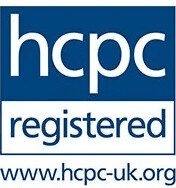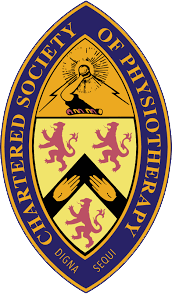General Physiotherapy
Merseyside Health prides itself on high quality physiotherapy services. Our approach incorporates detailed assessment, hands on treatment and individualized exercise rehabilitation. Our physio team will work with you to help you understand your condition, relieve pain and restore function as quickly as possible.
Physiotherapists are trained to assess and treat a wide range of conditions ranging from sciatica & arthritis to sports injuries & fractures. No two injuries are ever quite the same, therefore a person centered as well as evidence-based approach is vital to getting the best possible outcome.
Mulligan Techniques
Mulligan techniques are a form of hands on or manual therapy treatment. They involve mobilization to the joints of the body by a trained physiotherapist while the patient engages in active movements. These techniques can help modify a range of symptoms and reduce pain, allowing patients to achieve a greater range of motion. Mulligan techniques have been developed for nearly every joint in the body. They are particularly popular with therapists for their usefulness in neck pain. However, they can be applied just as easily to the shoulder, spine, hip and even foot and ankle joints.
How are they applied?
Mobilisation with movement is usually applied through therapeutic handling with the physiotherapist applying force directly to joints through the patient’s skin, however they can also be applied using various pieces of equipment such as towels or Mulligan handling belts to improve patient comfort. The other benefit of these techniques is that they can be taught to patients so they can continue using this form of treatment at home as a form of self-management.
Is this a manipulation?
The term manipulation has different meanings for different people. However, most people associate it with a high velocity thrusting movement generating a crack or a clicking sound known as a cavitation. In contrast Mulligan techniques are applied using low velocity sustained glides to a joint in an accessory plane of movement. For example the therapist might apply a gliding force to the knee while the patient completes the usual motion of bending and extending. This makes them popular as they are generally pain free and less likely to exacerbate a painful joint.
Mulligan techniques are used alongside other management approaches like exercise and education. They are popular for their ease of integration with exercise treatments.

Manipulation
Manipulation is a form of manual therapy which involves the application of a high velocity low amplitude force to a targeted region of the body. This action often results in a clicking sound known as a cavitation. Most commonly this is applied to the spine but there are also some techniques for peripheral joints of the body.
How does it work
There are many different explanations for how manipulation can support recovery. Physiotherapists who practice manipulation generally use it for its non-pharmacological analgesic effects and to facilitate muscle relaxation to complement exercise.
Patients must be assessed and screened for potential contraindications to manipulation such as cardiovascular risk factors and history of trauma to ensure application is safe.
Conditions treated with manipulation include:
- Lower Back Pain
- Neck pain
- Thoracic back pain
Manual Therapy
Manual therapy refers to a group of hands-on treatments often used by physiotherapists and Sports Therapists to treat patients. Manual therapy is commonly used as a form of non-pharmacological pain management and to increase mobility. Examples include joint mobilization, manipulation, muscle energy techniques (MET) and Mulligan mobilization with movement (MWM).
Manual therapy should be used alongside other interventions such as exercise and education about your condition. Combining manual therapy with other treatments is known as multimodal care. Conditions which may be appropriate for manual therapy include:
- Lower back pain
- Neck pain
- Thoracic back pain
- Shoulder pain
- Knee and ankle pain
- Wrist and hand joint pains
Exercise rehabilitation
Exercise rehabilitation is a core physiotherapy skill. Exercise programs should be individualised and specific to the patient’s complaint. Your physio will take into consideration a variety of factors to arrive at a suitable program. These factors include your age, pain intensity, previous exercise experience, equipment availability and lifestyle factors such as work and childcare arrangements.
Exercise Approaches
- Mobility
- Strength
- Power
- Cardiovascular endurance
- Balance and proprioception
- Pilates
- Yoga
- Tai Chi
Treatment modalities
Our physiotherapists are also trained in additional treatment modalities such as laser, shockwave, acupuncture & Muscle Stimulation. These modalities should be used as part of a wider package of treatment to support your recovery.
Online Physiotherapy
If you would like to see one of Merseyside Health’s experienced physiotherapists remotely, we also offer virtual/online physiotherapy consultations. This service is conducted via our secure consultation software and utilises an exercise prescription app. The purpose-built app allows you to receive exercise videos and advice documents directly to your device in real time during your appointment.
Common conditions we treat
- Sciatica
- Lower back pain
- Neck pain
- Shoulder pain
- Rotator cuff tears
- Frozen shoulder
- Arthritis
- Knee replacement
- Hip replacement
- Shoulder replacement
- Plantar fasciitis
- Ankle ligament injury
- Ankle Arthritis
- Tennis elbow
- Golfers elbow
- Frozen Foot pain
- Achillies tendon rupture
- Tendonitis
- Bursitis

